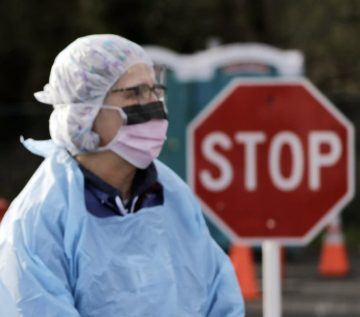Nicholas Kristof in the New York Times:
 Here’s the grimmest version of life a year from now: More than two million Americans have died from the new coronavirus, almost all mourned without funerals. Countless others have died because hospitals are too overwhelmed to deal adequately with heart attacks, asthma and diabetic crises. The economy has cratered into a depression, for fiscal and monetary policy are ineffective when people fear going out, businesses are closed and tens of millions of people are unemployed. A vaccine still seems far off, immunity among those who have recovered proves fleeting and the coronavirus has joined the seasonal flu as a recurring peril.
Here’s the grimmest version of life a year from now: More than two million Americans have died from the new coronavirus, almost all mourned without funerals. Countless others have died because hospitals are too overwhelmed to deal adequately with heart attacks, asthma and diabetic crises. The economy has cratered into a depression, for fiscal and monetary policy are ineffective when people fear going out, businesses are closed and tens of millions of people are unemployed. A vaccine still seems far off, immunity among those who have recovered proves fleeting and the coronavirus has joined the seasonal flu as a recurring peril.
Yet here’s an alternative scenario for March 2021: Life largely returned to normal by the late summer of 2020, and the economy has rebounded strongly. The United States used a sharp, short shock in the spring of 2020 to break the cycle of transmission; warm weather then reduced new infections and provided a summer respite for the Northern Hemisphere. By the second wave in the fall, mutations had attenuated the coronavirus, many people were immune and drugs were shown effective in treating it and even in reducing infection. Thousands of Americans died, mostly octogenarians and nonagenarians and some with respiratory conditions, but by February 2021, vaccinations were introduced worldwide and the virus was conquered.
I’ve been speaking to epidemiologists about their best- and worst-case scenarios to gauge what may lie ahead and see how we can tilt the balance. Let me start with the best case, since we could all use a dose of hope — which may even be therapeutic — before presenting a bleaker prognosis.
More here.
